This post carries on a series about the ways video games use their first areas to teach the player. In this one, we’ll be looking at one of the best-known video games of all time, Super Mario Bros., and how its entire first world lays the groundwork for the worlds to follow.
The very first level of Super Mario Bros. contains some of the most commonly cited examples of instructive design, largely due to their brevity and clarity. From the beginning, the player is on the left side of the screen, with a wide expanse to the right
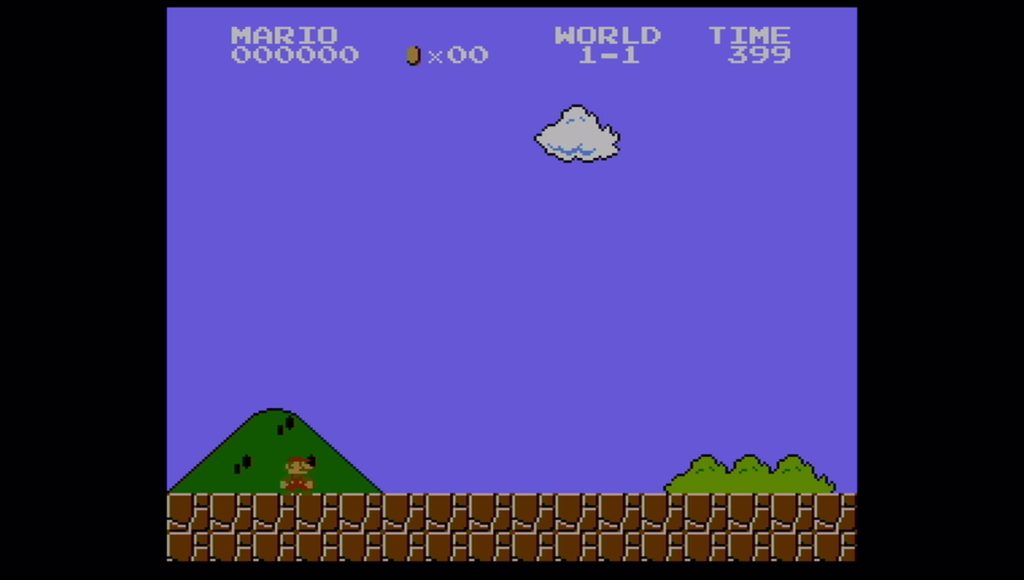
and little room to move on the left. This in itself encourages them to move right, the direction of progress in every level the game has to offer. On just a few short steps, the first enemy presents itself—a small, mushroom-shaped foe slowly advancing towards the player. Not only does this force the player to jump in order to progress past the first screen of the game—and the limited buttons on an NES controller make it difficult to miss the option—but the first block is positioned in such a way that the player is likely to hit it and be sent back down directly on

the enemy’s head, introducing both the ability to hit blocks and to jump on enemies to defeat them.
The first power-up is a similar case. Fresh from an encounter with a mushroom-shaped enemy, the player is likely to be wary of mushrooms going forward. However, the first mushroom
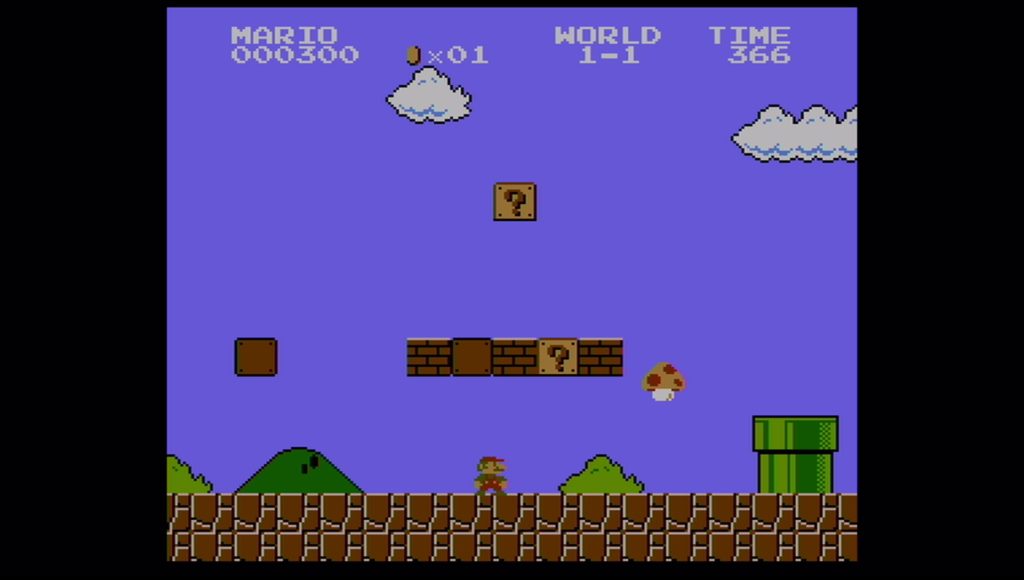
moves the same direction as the player, hits the first obstacle it comes to, and starts moving towards them. At the point of encountering it, the player is likely still under the row of blocks, so jumping will, as before, send them straight back down on top of the unknown mushroom. Instead of harming them or defeating it, an encouraging jingle plays and the player character grows larger. Without any words, the game has communicated its major mechanics in the space of a few short moments: move right, jump on enemies, hit blocks, get power-ups.
The last point I want to give in-depth explanation of in the first level is the pair of instances of two staircases later in the level. This is, as noted above, the most commonly cited example of what is in some circles dubbed an antepiece. The word is a
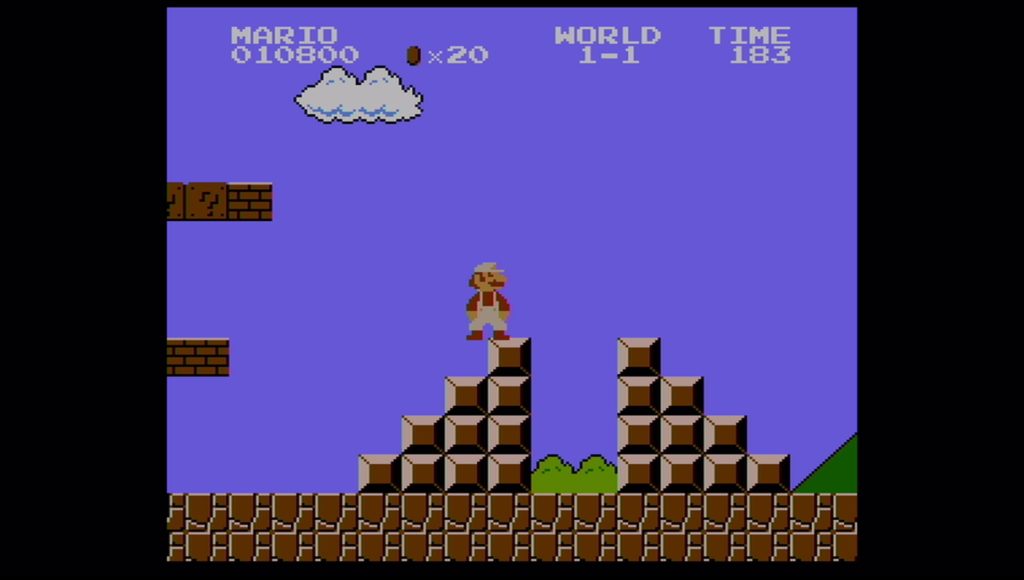
portmanteau of “antechamber,” a small room often used as a waiting or preparatory room before a larger room or event, and “set piece,” which, in the context of video games, generally refers to a one-time event which serves to change or break up the gameplay by providing an interesting and unique challenge. The antepiece, then, acts as an immediate, non-threatening example of how the set piece will play out, so the challenge doesn’t take the player by surprise. The staircases do just that: the first set has a pit in the middle, but the pit has a bottom, so a player who misses the jump can just hop right out. The second, immediately following

the first, has a bottomless death pit—but the pit will be of little concern if they conquered the innocuous variant moments prior. The first level is full to the brim of other examples, but in the interest of detailing other levels, I’ve condensed some of them into an image slideshow with brief explanations.
The beginning of level 1-2 teaches the player that they can enter pipes before they even take control. This new skill in itself offers some replay value to the level they just left, as one of the first pipes in that level is a passageway to a coin-filled shortcut.
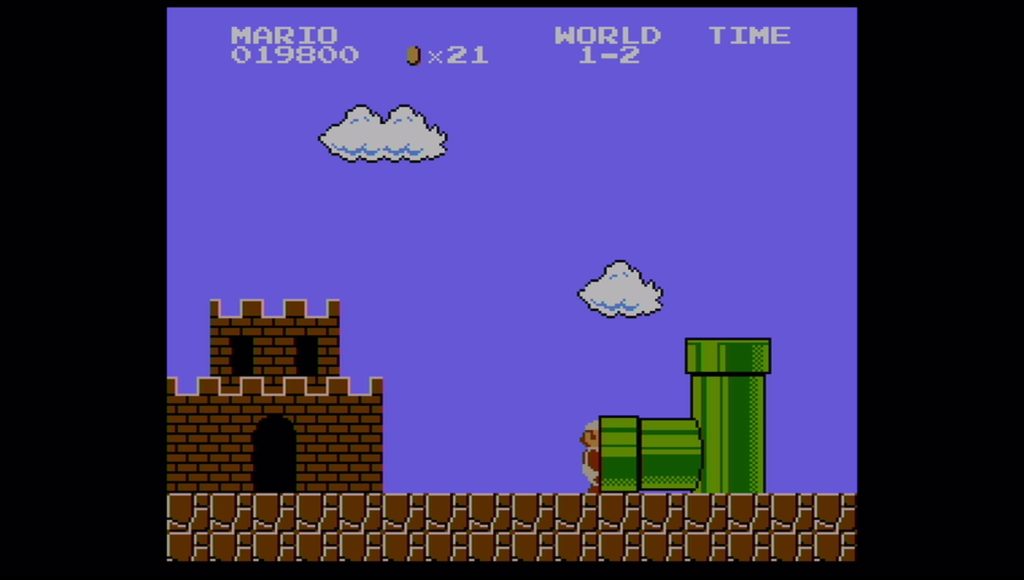
Similarly, on progressing into the level a bit, they’re presented with an option for how to proceed. If the player is small, they can fit through the gap below a section of bricks, but the enemies on the way through are a risk. If they’re powered up at all, they could run and duck to get through the small gap, otherwise they have to break the bricks overhead, presenting another teaching moment with an immediate reward in the form of a power up slightly farther ahead.
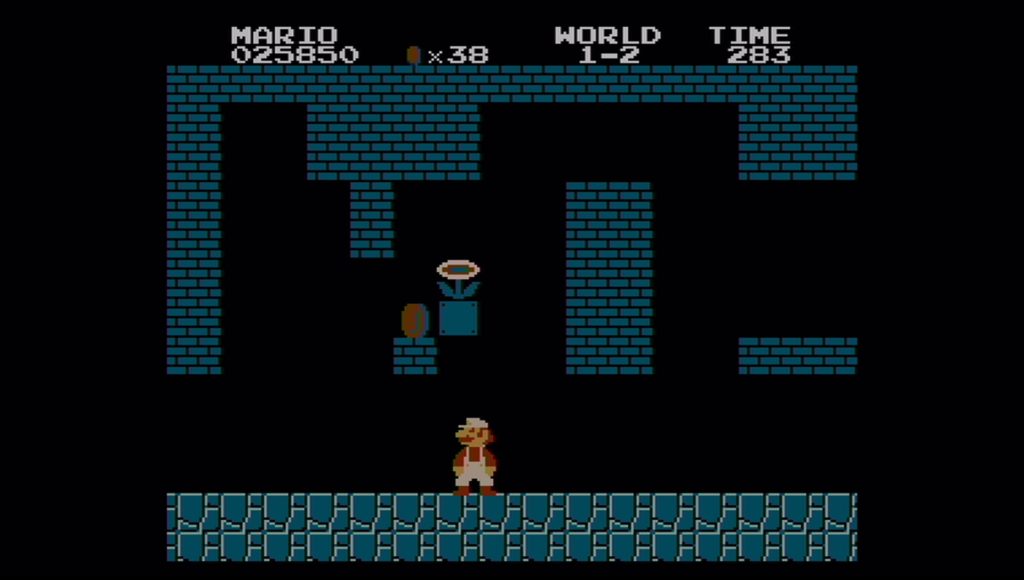
At the halfway point of the level, Piranha Plants make their first appearance, causing the previously-innocuous pipes to become more of a threat. However, the player has enough time to see them extend from the pipe while approaching, making their presence known and informing the player of the impending

threat. This first pipe also doubles as a reward for observation, as it is both the first pipe encountered since the start of the level and the second pipe in the game with a hidden coin room, rewarding and encouraging use of the knowledge gained. Whether the skill is utilized at the halfway point or not, the player must enter a pipe to exit the level, so they will have applied it at least once before the end. To reach
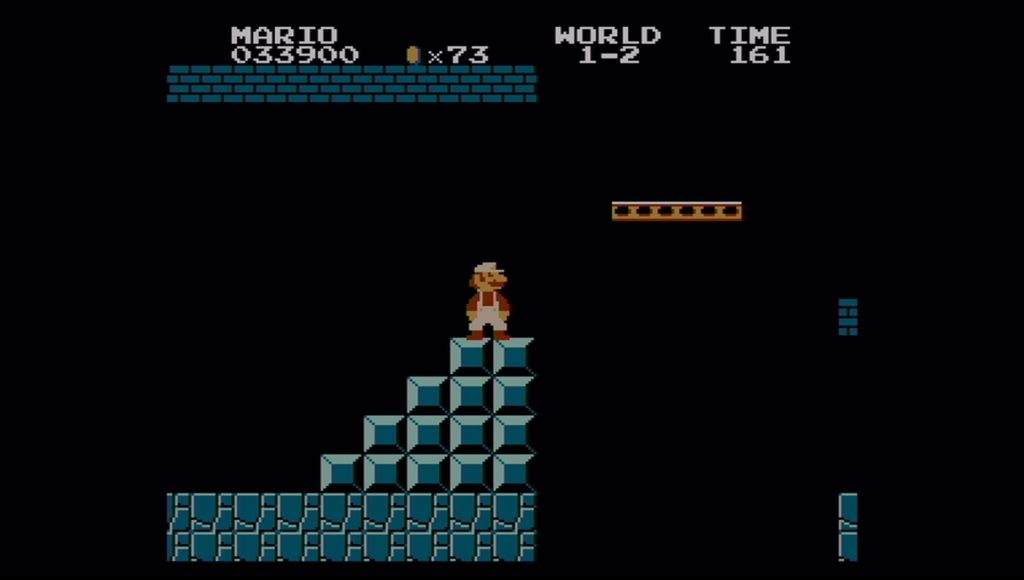
that end, however, they must cross moving platforms, which are first introduced from a safe vantage point so the player can see how they work before trying to deal with them. As a final reward for exploration, the second set of platforms can also lead to a warp zone, allowing them to skip to the second, third, or fourth worlds of the game immediately.
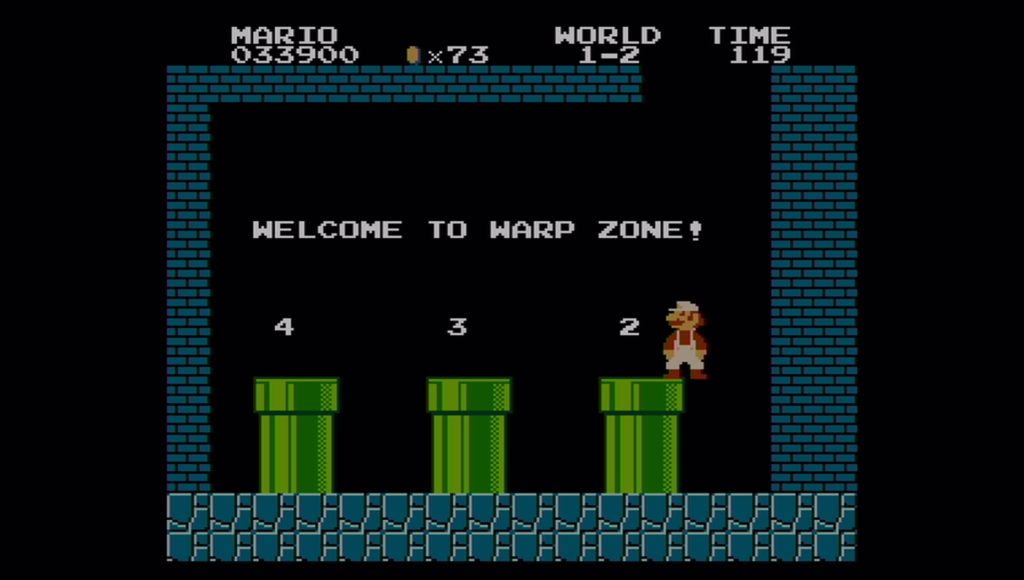
The third level wastes no time in introducing its core theme. Where the first was all about introductions and basic mechanics and the second was about enemy encounters in more enclosed quarters, this level focuses on platforming skill. There are fewer

than half as many enemies in the third level as there are in either of the prior two, which serves multiple purposes. First, the level is left to stand on its layout as a platform obstacle course, with enemies as a lesser part of the challenge. Second, the level can effectively introduce new enemies in isolation, such as the Red Koopa Troopa on the second set of platforms. While one of

them was at the end of the second level, it can be easily overlooked or missed, and the third level quite literally puts it on a pedestal so its unique behavior—turning around at a ledge rather than walking off—is on full display. Later on, a Red Koopa Paratroopa is introduced with a congruous pattern, moving back and forth in midair rather than on the ground.
The rest of the level presents new challenges and twists on themes already present in the prior levels. Moving platforms are utilized more than in level 1-2, and no longer introduced with safe observation points—the third level already utilizes a jump between two moving platforms. At the very end, the staircase
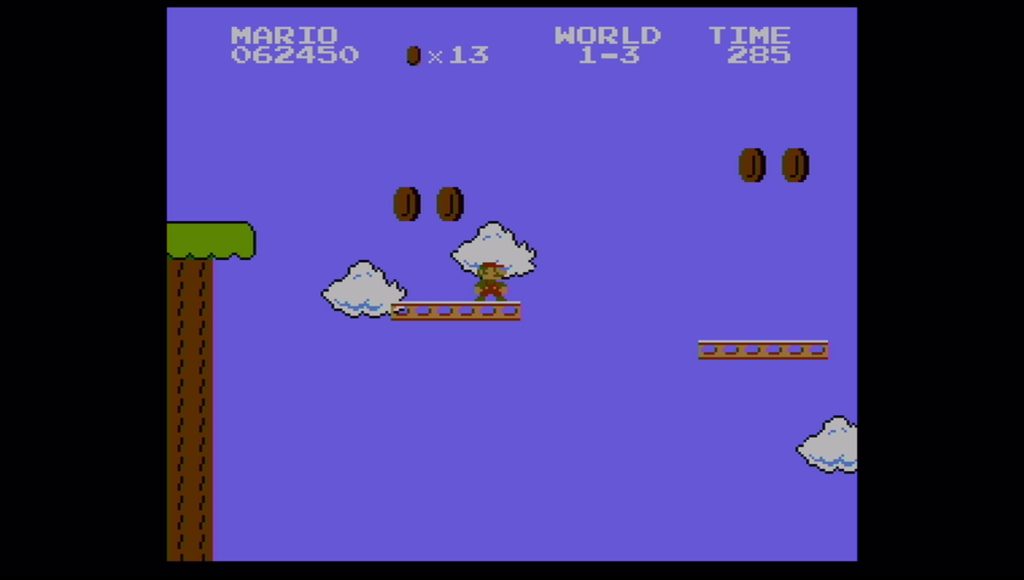
and flagpole setup is modified from the established precedent, lacking the lower stairs and adding more height per step at the higher levels. Both back up the third level’s theme by cleverly blending old and new elements to create something unique.

The fourth level is the first castle in the game, and the difficulty increase is evident just from the first screen. Close quarters and lava make for a challenging mix, and the rotating, unkillable Fire Bars mere paces ahead only make the point clearer. While the environment certainly wasn’t friendly before, it is now actively out to harm the player, and all they can do is avoid it. As a step
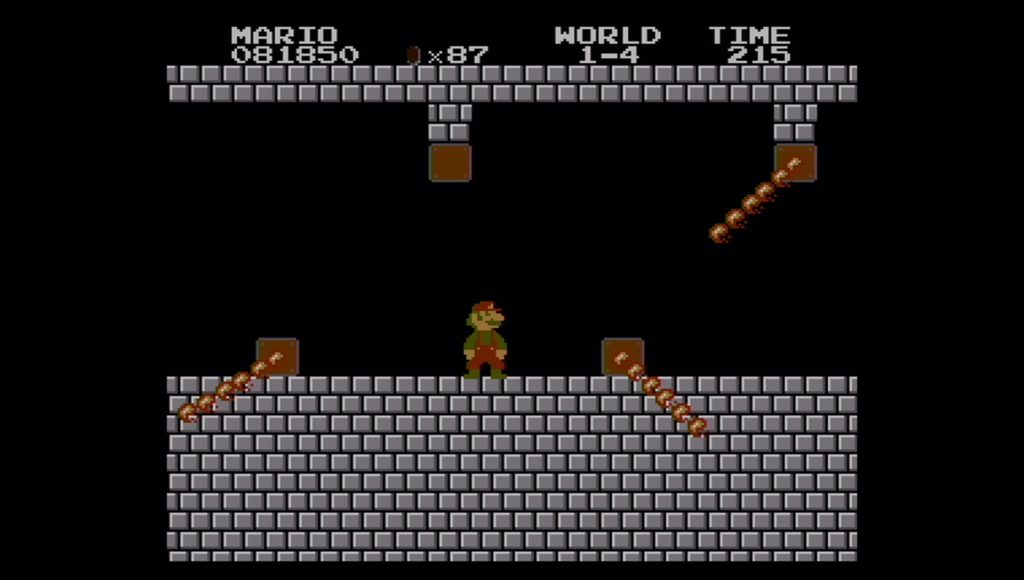
up from the previous level’s focus on platforming, nothing in this stage can be killed save the boss himself, and only by unconventional means—every challenge present must be maneuvered around rather than conquered. The corridor following the initial platforms further limits space, making maneuverability a challenge and quite clearly showing that rushing forward will not always lead to positive results.
Past this corridor is another stretch of uneven brick where the player must avoid fiery projectiles launched from farther ahead. This could be quite challenging, but several pits act as bunkers to wait out the passing of a projectile and seek safe passage
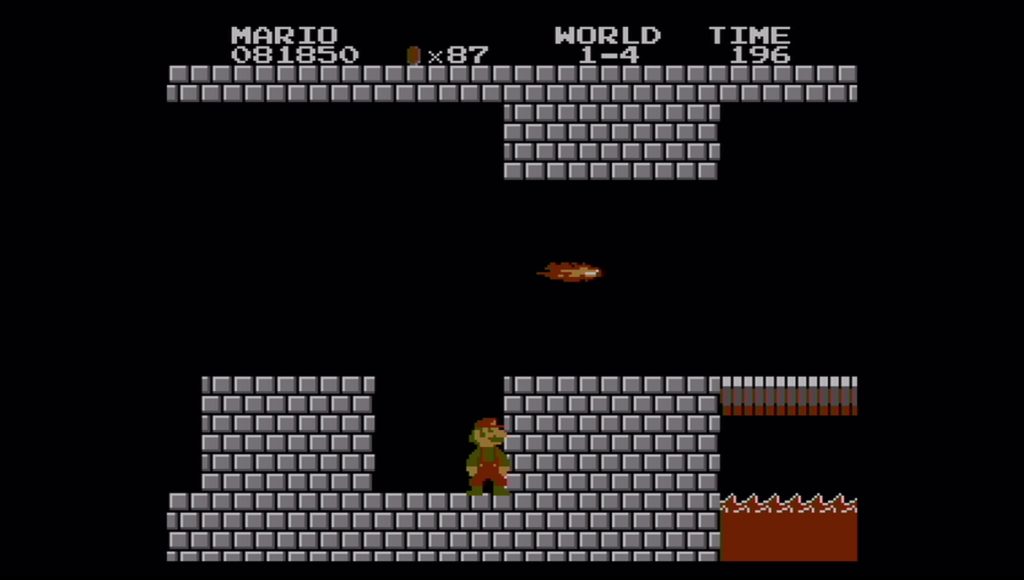
onward. The last of these pits offers a slight glimpse at what’s to come: a bridge over lava, the origin point of the fireballs. On the bridge is Bowser, larger than any foe the player has encountered thus far, but equally as important is the axe on the other side of the bridge, which becomes an immediate objective due to the association between an axe and a bridge—or, rather, a bridge and being cut down.

The moving platform overhead offers one way past the beast, but not an entirely safe way, just the same as any other option past him. The player is given that one hint and left to use their abilities to overcome the first large obstacle in their path.
That rounds off the first world of Super Mario Bros. While calling any game perfect would be a long shot, this first world is a masterclass in game design, and is well worthy of the game, franchise, and genre it codified.



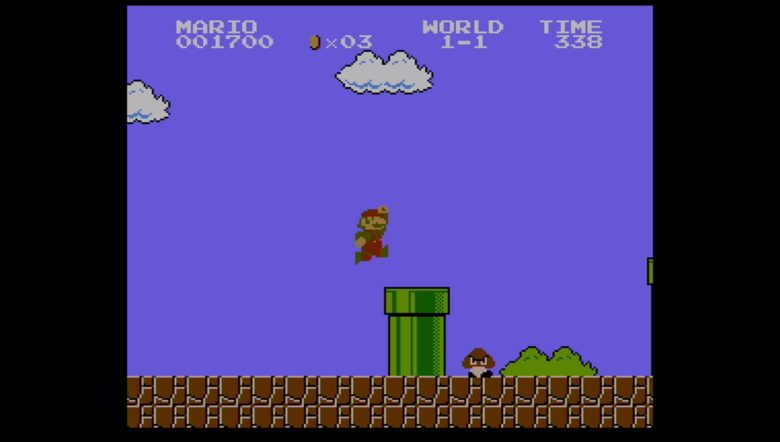
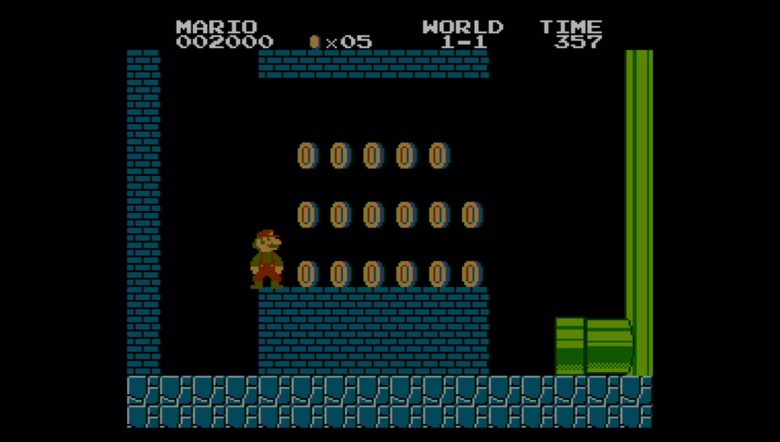
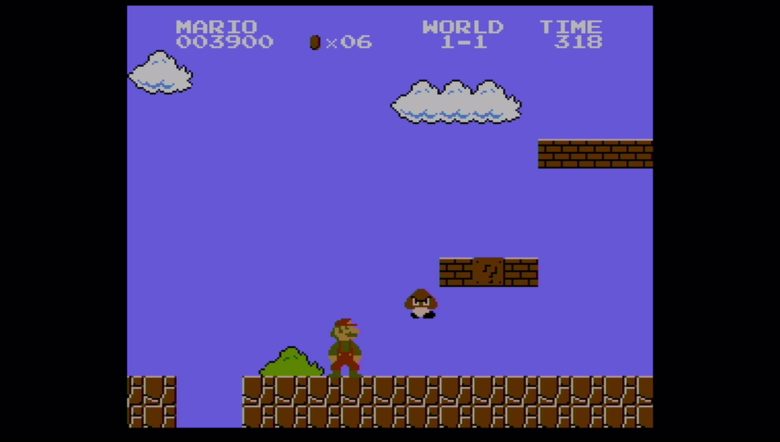

Makes me excited to play part of the series again!